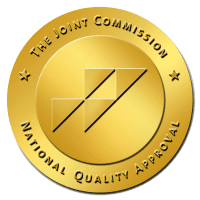Overall, drug overdose deaths rose from 2019 to 2021 with more than 106,000 drug overdose deaths reported in 2021. Deaths involving synthetic opioids other than methadone (primarily fentanyl) continued to rise with 70,601 overdose deaths reported in 2021.
Drug addiction can be a scary and confusing time, not only for the individual but the family as well. There is no easy way of confronting active addiction but having the courage to ask for help or supporting a loved one in their quest for recovery could ultimately save their life.
If you or a loved one are currently displaying any of the signs and symptoms below, CALL 911 IMMEDIATELY.
Loss of consciousness, limp body
- Slowed breathing, choking.
- Small, “pinpoint” pupils
- Pale, blue, or cold skin
- Slowed heart rate.
When contacting 911 be sure to describe what symptoms the individual is displaying, and which suspected substance the individual may have ingested. Experiencing an overdose or having a loved one who as recently overdosed can be a very traumatic event and will leave many questions on how to proceed or what to expect during the process. Below we have done our best to provide answers to some of the most common questions during this process.
1. What might a loved one experience at the hospital when someone they love is being treated for opioid overdose?
Having a loved one who experiences an overdose can be a very scary and traumatic experience for all parties involved. As a family member there is no short answer as to what they may encounter while their loved one is being admitted. Due to the current state of the pandemic, it is a very real possibility that you will have to remain in the waiting room while the medical professionals do everything in their power to reverse the effects of the opioid that was consumed. Typically, first responders use a medication called Naloxone to treat a narcotic overdose. Depending on the amount ingested multiple doses of Naloxone may be employed as well as resuscitation tactics such as assisted breathing and chest compressions. If the medical staff can reverse the effects of the overdose the patient will be in quite a lot of pain due to the narcotics being flushed from their system and will experience severe withdrawal symptoms. Hospitals will typically only hold an individual for 1-3 hours after the reversal for monitoring purposes to ensure no further complications. It is very important to try and get that loved one to a detox immediately after their release from the hospital to continue proper care.
2. How can someone support their loved one who is struggling with opioid addiction? How can they encourage them to seek treatment?
Education for both the family and the individual struggling is a great place to start. Being informed on the dangers associated with addiction is a great talking point rooted in facts. There are many different answers to supporting a loved one who is struggling with addiction and no one size fits all answer. There is a very fine line between support and enablement. Support could be defined as providing rides to treatment or appointments and making sure the loved one feels encouraged in their journey of recovery. Enabling would be allowing that loved one to continue to use narcotics in your home and giving money which could be used to procure more drugs. It is important to know that the physical and mental health of the family is equally as important as the addicted loved one. Learning how to set boundaries is vital to limiting the manipulation tactics most addicts will use with their loved ones. We want to refrain from ultimatums or absolutes but have firm lines you are not willing to cross. In learning how to set boundaries with loved ones that will open the door for the conversation about what forms or treatment are out there and which direction the individual may want to choose. Love and support are vital in recovery. Many addicted individuals feel alone, afraid, and ashamed of the direction their life has gone, however with the support can find the courage to taking the first step of asking for help. There are many great support groups such as Parents of Addicted Loved Ones and CO-AON.
3. What are the long-term treatment options for opioid addiction and how effective are they?
Most addiction is rooted in a deeper emotional or psychological issue that needs to be addressed to develop a healthy foundation upon which to build lasting recovery. Depending on the severity and length of an individual’s addiction may dictate which type of treatment is necessary for the person to begin their recovery process. With most opiate addicts Detox is a great place to start to safely navigate through getting the drugs out of their system. Once an individual is clear headed the continuation of care is the most important part. There are long term Outpatient and Residential programs which can help develop healthy coping mechanisms and relapse prevention tools to help a member abstain from usage. There is medication assisted treatment options that are offered either in a standalone capacity or in conjunction with outpatient or residential treatment. These medications are Suboxone, Methadone and Vivitrol. In a standalone capacity Suboxone has shown to have a success rate of 49% and jump to nearly 75% when the individual is actively enrolled in programming as well as the medication. Methadone has a success rate of 54% when taken by itself and almost 84% success rate when coupled with an alternative recovery program. Vivitrol when combined with counseling and or therapy has shown to have a 90% success rate. All recovery, however, is based upon the individual’s willingness and commitment. It is important that when an individual becomes willing that the support and resources of recovery are at the family and the loved one’s disposal.



